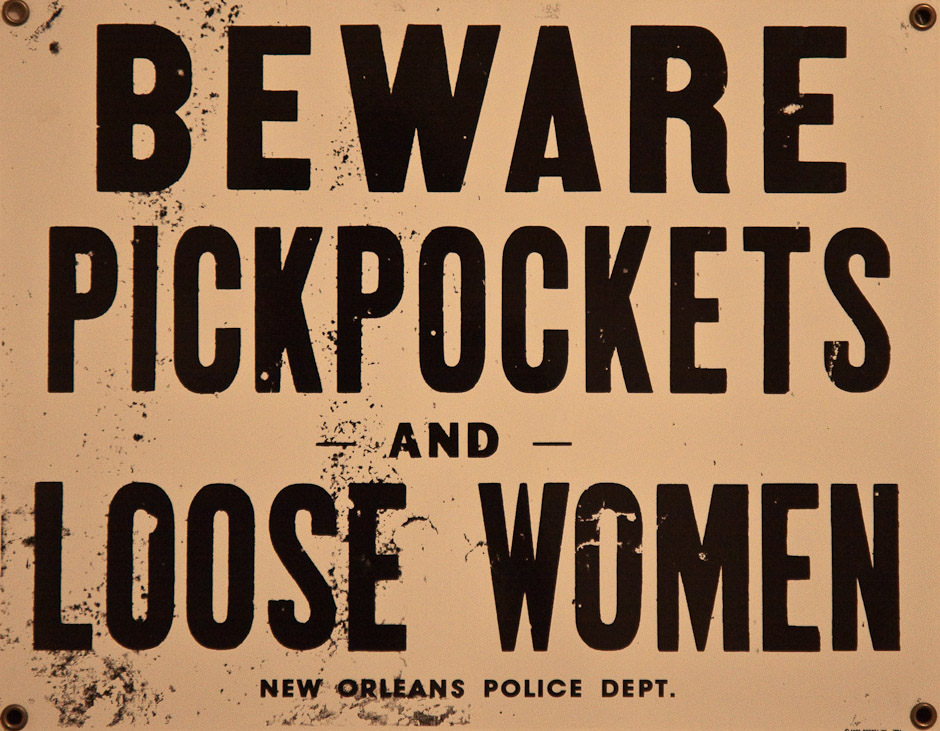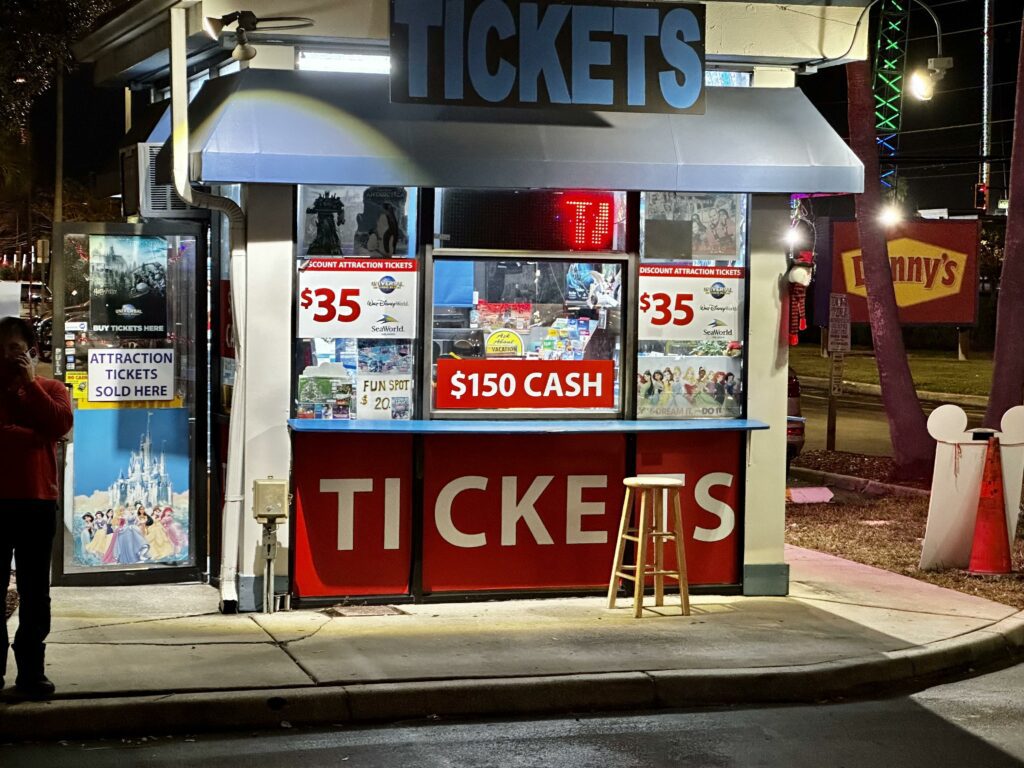You can travel the world over, and in every corner you’ll find some people who want to part you from your possessions. But many of the techniques are similar, no matter where you are. These are the most common tourist scams worldwide. See how many you recognize.

Common Tourist Scams: ATM/Banking
The Skimmer. This technique has been around for a while. It involves an electronic device that fits over the slot where you insert your credit card. This device reads your card information and the scammer then uses that to purchase items online.
Fortunately, the newer cards with chips inserted are much harder to skim with a skimmer. But there are other methods that an unscrupulous person can use to steal your credit card information.
Check out my post on Should I Get Pesos Before Traveling to Mexico? to see about other ATM scams.
Common Tourist Scams: The RFID Reader
The RFID Reader. Today’s credit cards contain a chip that is sensitive to radio waves. When a RFID device sends out a signal, it tells the chip on your card to answer back. If the device is very sensitive, it’s possible to gather enough information from your card to create a “clone” – a duplicate card the thief can use a few times for purchases. (A bank’s fraud detection software will detect this fraud pretty quickly, so they’ll only have a few chances.)
To be clear, this type of theft is extremely rare, but it is technically possible. To protect your card, you can purchase a wallet made of radio-proof materials, like metal, carbon fiber or Kevlar. You can see some examples below.
However, a much more common scam can obtain all this information without any technical expertise at all.

Common Tourist Scams: Phishing and Malware
Phishing. Most people have seen these scams: “You’ve Won! Click Here to Claim Your Free [Fill in the Blank]” When you click on the email or text with this message, it will ask you to “verify” your information with whatever the scammer is trying to collect – your banking information, address, phone number, email, passwords – all of this is valuable to a scammer, and can be sold to others.
I personally receive at least two dozen of these scams per day. My email junk mail detection usually collects it, but a few slip by. They often have oddly-shaped characters mixed in the subject line, like “Best Buy®” or “_“Ace Hardware Department”. Or the return email address is a hodgepodge of letters and numbers, directed to a domain that has nothing to do with the supposed sender.
Learning to recognize these types of scams will protect you from the most common type of identity theft. Whenever someone you don’t know asks you for sensitive information, stop and think about it. Exit the email and access your account directly through your usual means and see if there really is any message from your bank or credit card or Amazon. 9 times out of 10, everything is fine.
Malware. These attacks also come through email, and can be even worse than phishing. The most notorious and costly scam happening today is the Ransom Demand.
A user receives an email, asking them to click a link. It could be disguised as anything – a seemingly personal message from a friend who has been hacked, or a line claiming “Click Here to Redeem Your Prize!” Once you click, the malware is downloaded and installed on your computer, and from there it begins its dirty work.
The Ransom Malware locks every file on your computer with an unbreakable password. Soon after installation, you’ll receive a message with a ransom demand. They’ll ask you to send money to an account, after which they’ll release your files.
The Ransom Malware has been used against individuals all the way to large corporations and hospitals. It can bring everything to a halt in minutes. Without a safe backup, there’s no other alternative but to pay the ransom.
To avoid a malware attack, learn to recognize the fake, bogus emails (see examples above). Never, ever click a link in an email unless you know for sure it has been sent by a friend and you have foreknowledge that it is being sent. Also, keep your computer’s antivirus software updated and operating. It can often spot a malware attack right away and keep you out of trouble.
These are all scams that can happen anywhere – whether you are traveling or not. But there are other scams that specifically target the traveler.
Common Tourist Scams: Credit Card Cloning
You’re checking out of your hotel and you give your card to the desk clerk. Suddenly she is called to the back room. She excuses herself, leaves (with your card in hand), and in a few seconds she comes back. She finishes your check-out and you leave.
A few days later, you find out that your card has been used to purchase clothing at a high-end store. And you have no idea how someone could have gotten your information.
More sophisticated thieves, like this hotel clerk, can capture your card information in a matter of seconds, enabling them to create another card that they use to make purchases. Again, the bank’s fraud unit is really good at spotting these, but not usually before they make off with some hefty purchases.
Don’t let your card leave the room. These days, most hotels and even restaurants are using credit card machines at your table. Cards with RFID chips are more difficult to clone, so make sure you have an updated card.

Common Tourist Scams: The Commotion
This scam has many versions, but all involve a flurry of activity you weren’t expecting.
In Puerto Vallarta, one of the most common scams is the “Salsa Squirt.” You may be at a taco stand, and someone approaches you with napkins, telling you someone squirted ketchup on your back. As they and an accomplice help you clean up, they clean out your wallet.
The best way to avoid this or any variety of “The Commotion” is to keep your valuables secure. A wallet in a jeans pocket is like a beacon for scammers – it’s by far the easiest setup for pickpockets. Instead, consider carrying your wallet in your front pocket. Or, as Rick Steves recommends, get a money belt and keep only a small amount in your actual wallet.
Common Tourist Scams: The Inflated Bar Bill
This scam is seen in the most densely-packed tourist destinations, such as a cliffside restaurant in Greece, or the Cinque Terre in Italy. You sit at a lovely restaurant to admire the view, order drinks, and find out your bill is over $100! Or even more!
Don’t be distracted by the view until you’re clear on what the prices are for the things you are ordering. If the menu has no prices, find a better view.
Common Tourist Scams: The Overpriced Taxi Ride
This one is so common that probably everyone has or will experience it at some point. You get in a cab, tell the driver where you want to go, and when you get there, he demands much more than you had originally anticipated.
(An offshoot of this scam is the “That Wasn’t a $20, that was a $10”. You hand cash to the driver, and they insist it wasn’t enough, that you didn’t give them the bill you know you gave them.)
One big benefit of Uber and Lyft is the fact that no money has to change hands at all. The price is set before you enter the vehicle. The route is spelled out on the app, so there’s no confusion about where you are going. But these services are not universally available, so working with a cab driver is probably inevitable.
In my experience, the vast majority of cabbies are legitimate and I’ve rarely had a problem. But before you enter into a cab, always ask the total price to get where you’re going. Do a little bit of research online before you go and get a ballpark idea of how much rides will cost, and whether the cabs charge per car or per person.
You’ll find that cabs are far less likely to pull shenanigans when you ask to be dropped off at a large hotel or resort. If you have any issue, you can simply walk in and ask for help from the bellman or concierge.
And finally, take a photo or make a note of the actual cab you get into. Having the cab number is helpful if you forget something in the backseat.
Common Tourist Scams: The Fake Policeman
I’ve never seen this one myself, but others have mentioned it. (And I’m not sure the policeman is always fake.) But the scam works like this: You are out late with friends, you have a few drinks – or more than a few. Or perhaps you’ve imbibed in something less than perfectly legal. While you’re making your way home, a cop stops you and threatens to arrest your for some charge. While you’re trying to explain yourself, the cop lets you know that, for a small fee, you could just be on your way. Once you take out your wallet, he demands all your money.
There are a lot of ways to avoid this scam, starting with not staying out too late and not walking home alone. There’s no need to make yourself a target.
Whether the cop is fake or not, once you are stopped, you are going to be out some money. So don’t carry a large amount of cash with you. And skip the fancy jewelry and watches.
Another trick you can use is the fake wallet. If you know you’re going to be out, carry a fake wallet with a $20 and some expired cards. You can always hand this over and cut your losses.

Common Tourist Scams: The Round of Drinks
This scam most often happens with a young man alone in a strange city. He’s wandering around a large, tourist-packed square, when a pretty young lady approaches and asks him to take her photo. After some time being chatted up, the woman asks the man if he wants to come with her to a bar for some drinks. He follows her and they start the evening. After a few hours, the woman disappears, and the man is confronted with an enormous drinks bill, presented by a few enormous guys in suits.
It’s easy to get fooled when you let your guard down. And again, this is one where you’re going to have to pay. If you don’t have enough cash, they’ll want your credit card. It may be worth it to call your bank immediately after leaving and see if they will cancel the charge.
Common Tourist Scams: The Friendly Barfly
Like the Round of Drinks, this one involves someone being very friendly and engaging. You’re in a busy bar, and someone starts laughing at all your jokes. They ask where you are from and want to know all about you. Soon everyone is “Salut” and “Sláinte” or “Prost”, and you’re just having a good old time. Until you get the bill, and realize the friendly barfly has been putting everyone’s drinks on you.
Drinking is a lot of fun, but it can also dull your senses and awareness. You forget to ask important questions. And by then, it’s all over.
To avoid this or any bar scam, try to stick with your friends. If you must go alone, it’s OK to be overly suspicious of anyone who is “too friendly.” And pay attention to any signals from other bar patrons. Unless they’re all in on the trick, they will try to warn you about any sketchy individuals (probably because they’ve been scammed themselves.)
Common Tourist Scams: The Shell Game
Now seriously, if I have to warn you about this one, you probably just deserve to get scammed.
There are a thousand different versions of this one, but they all involve some sort of wager. When you are strolling through any European square on a busy day, you’ll seem the gamers, encouraging people to play their game. And they will make it look winnable – sometimes for a long time. But once you start betting, you start losing, and these guys don’t mess around.
I say “guys” because they almost always involve a group of men. You may think you’re just a part of a crowd, all playing a game, but most likely it’s just you, and everyone else is part of the scam. They are relentless about pressuring you to play just “one more hand” or “one more throw.” They will urge you to bet higher. And though it may appear others are winning, it’s just you who is losing.
The easiest way to avoid this? Just Don’t. Don’t even stand around looking at the games. Don’t comment how they are scams. Don’t acknowledge them at all. Nothing good comes of it.

Common Tourist Scams: Timeshare Sales
And last but not least, the Timeshare Sellers.
I own two timeshares myself. I am not opposed to the idea of timeshares. There are actual advantages over owning or even renting. But buying a timeshare is just not something anyone should do while on a vacation. Would you really spend that much money in any other situation? No. No you would not.
But the timeshare sellers know this, so they try to trick you. You will see the innocent-looking booth with flyers about fishing or SCUBA or snorkeling or zip-lines. And when you approach, they’ll talk to you for a minute, then throw in the “You know, I can get this for you for free.” All you have to do is commit to a 90-minute presentation – you don’t have to buy anything.
But from many years of experience, I can assure you – there is no timeshare presentation on earth that lasts 90 minutes. None. And depending on which one you get involved with, even just escaping can be extremely intimidating.
So, unless you’ve researched a place, and you know the contract details and how much you’re willing to pay, never sign up for a timeshare presentation. It’s not how anyone should purchase something. That zipline isn’t worth a full day of your vacation.
For More Information
For more information on how to avoid being scammed when purchasing travel, visit the very comprehensive Federal Trade Commission article Avoid Scams When You Travel.



